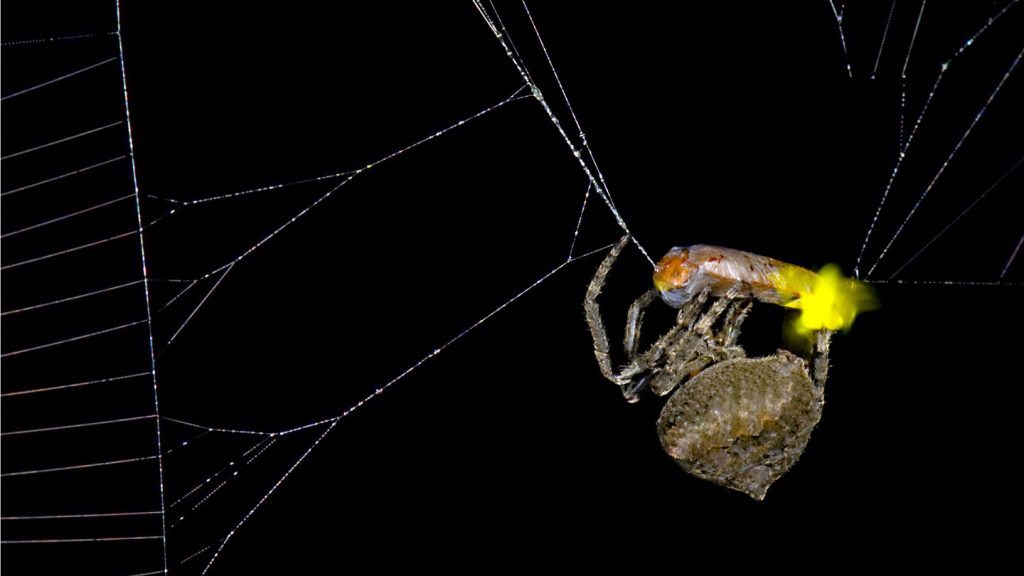Male Abscondita terminalis fireflies use different flashing patterns to attract mates, with females flashing a single light and males flashing multiple times. However, flashy males can become decoys for orb weaver spiders, who trick them into blinking more like females to lure other males into their webs for food. Researchers observed this behavior in Araneus ventricosus spiders, where fireflies caught in their webs changed their flashing patterns. When these spiders were present, male fireflies were more likely to get caught in webs and stop using both their lanterns to pulse light. Trapped males that had been wrapped in silk stopped flashing multiple times and instead flashed a single, weaker light closer to a female pattern. The spiders also handled fireflies differently than nonflashing beetle species, while other beetles were immediately fed upon, fireflies were wrapped lightly and remained visible in the web while still flashing.
The team set up cameras on spider webs in farmland to study the interaction between fireflies and orb weaver spiders. By placing fireflies directly into the webs and observing the spiders’ behavior with and without their presence, the researchers found that male fireflies adjusted their flashing patterns when caught in the webs of A. ventricosus spiders. The spiders were also less successful in capturing fireflies when their lanterns were obscured with black ink. This indicates that the spiders rely on the visual signals given off by fireflies to lure in more prey. The study sheds light on a unique hunting tactic employed by these orb weaver spiders in southeast Asia.
The researchers found that trapped fireflies changed their flashing patterns in response to being caught in orb weaver spider webs, particularly in the presence of A. ventricosus spiders. The spiders’ venom or bite likely plays a role in influencing the behavior of the fireflies, causing them to modify their signaling. The spiders then capture the fireflies, wrap them lightly in silk to keep their lanterns visible, and leave them in the web to attract more prey. This behavior represents a sophisticated hunting strategy on the part of the spiders, manipulating the communication signals of male fireflies to lure additional prey into their webs.
These observations add a new dimension to the hunting tactics of orb weaver spiders, showcasing their ability to exploit the signaling behaviors of male fireflies for their own benefit. The study highlights the intricate interactions between predator and prey in natural ecosystems, providing valuable insights into the complexities of predator-prey relationships. Further research is needed to fully understand the mechanisms behind the signaling changes observed in fireflies when captured by orb weaver spiders. By conducting additional experiments and studying orb weavers in different regions, researchers hope to uncover more about this fascinating behavior and its ecological implications.















